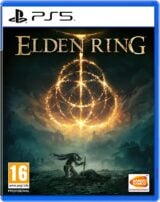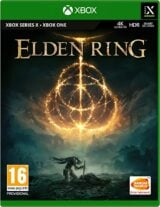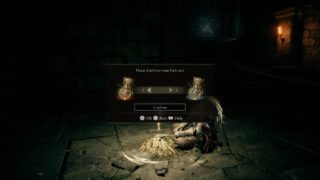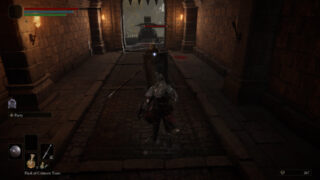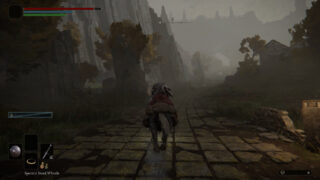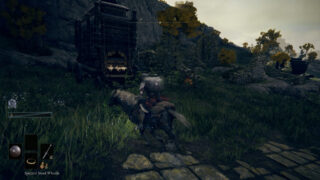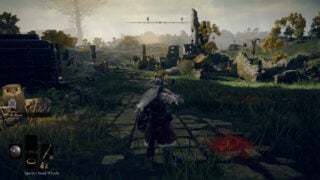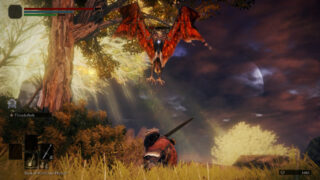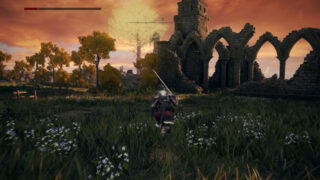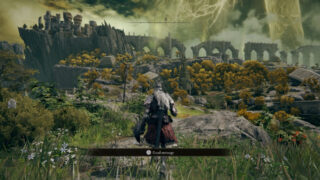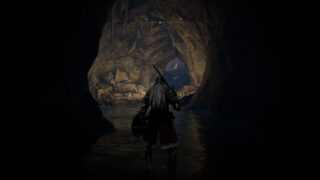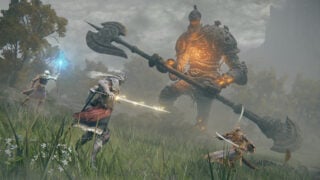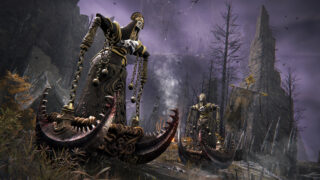Hands-on: Elden Ring is more than just open-world Dark Souls
The closed network test makes an incredibly strong impression, with a striking art style and tantalising world
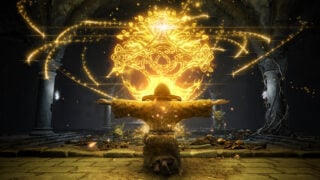
“You see that mountain? You can go there”. That timeless cliche is emblematic of open-world game design that dominated much of the last generation. Vast maps that would take an age to traverse, with little of consequence along the way. That’s why the Dark Souls series felt like such a revelation.
Sure, if you looked into the distance and saw an imposing castle, chances were you were going to find your way there eventually, but in order to get there, you’d have to fight through caverns, bogs and towns littered with the undead. The journey was always meaningful and bespoke.
Elden Ring provides the Dark Souls formula with its biggest challenge yet. A genuine attempt at an open-world version of the series, and from what we’ve played, it pulls it off spectacularly.
Elden Ring begins with the player finding themselves in a dark cave, seemingly an intentional move to give the player a bit of comfort before their preconceived notions about the genre are challenged. There’s a small off-shoot of the cave which serves as a tutorial, a helpful reminder even for those who’ve suffered the journey from Anor Londo to Yharnam. You can skip this on future visits to The Lands Between, heading straight for the imposing door that stands in front of you.
It’s here, when you enter The Lands Between for the first time, that FromSoftware reinforces just how much of an open-world game this is. The music swells, the landscape opens in front of you, and you see castles and glowing trees dominate the skyline. If that sounds like the opening to The Legend of Zelda: Breath of the Wild, then you’ve grasped exactly what FromSoftware is trying to tell you.
Returning from the Souls series are the bonfires at which you can level up, arrange your abilities and manage other aspects of your character. You can also choose to wait until another point in the day/night cycle, something that didn’t have much effect during our preview, but the possibilities of what a team like FromSoftware could do with such a mechanic are really intriguing.
The bonfires, in Elden Ring called sites of grace, also provide respite from the brutal enemies that populate the world, allowing you to replenish your health and refill your various flasks. They’ll also point you in the direction of your main objective, although not with a large exclamation point flashing somewhere in the distance, a faint wisp of golden light aims in the general direction of your next foe.
Once we’d entered the world, spoken to the NPC and had a look around, we were struck, and frankly overwhelmed, by where to go next. Generally in a Souls game, you know that on the path forward, it’s unlikely that you’re going to run into something that’s completely impossible for you to beat. Sure, there are some enemies, like the Knights in Demon’s Souls, that are tough, but even then, they’re beatable.
But in an open-world setting, it’s impossible to know if you’re going to run into the wrong part of town, and suddenly have those precious runes (Elden Ring’s equivalent to souls) stolen from you. Sure, you can follow the golden path, but that doesn’t tell you how to navigate the journey towards the boss, only giving you a rough idea, so, with no other option, we went exploring.
The version we were playing was the same as those that manage to get into the Closed Network Test will experience, but without the time limits. We have the same choice of 5 classes, and the same limitations on the map. Interestingly, the white fog the blocks players from venturing further into the world of Elden Ring is the same as what will appear when in a multiplayer session, in order to stop two players in the same game existing at two opposite ends of The Lands Between.
“The music swells, the landscape opens in front of you, and you see castles and glowing trees dominate the skyline. If that sounds like the opening to The Legend of Zelda: Breath of the Wild, then you’ve grasped exactly what FromSoftware is trying to tell you.”
The first area we found was a small cave off to the left of the main path. Even in this CNT, there was a surprising number of smaller sub-areas, almost microcosms of the old level system of the Dark Souls games. Usually, these involve a small puzzle, and a few enemies, before reaching a mini-boss. They’re still tough as nails, but they usually have less health, probably to make the player feel like they’re getting a few small wins on the journey to taking down the larger foes.
In a first for the series, you’re given a horse to ride around the world on. The Spectral Steed can be used in open areas and is mostly for getting across the vast plains of the open world. However, as we found out, it also adds a dimension to boss fights. While travelling through a flooded basin in the center of the CNT map, suddenly, a huge Dragon descended out of nowhere and turned us, and our steed, to ashes.
Once we’d given our heads a shake and returned to the area, the Dragon now patrolled the basin, meaning if we wanted to explore, and pick up the plethora of items in the area, we’d have to take the dragon down. Heading in on foot was pointless, it’s impossibly fast, and regularly takes to the sky and fries absolutely everything around it. But then we realised, in Souls fashion, that the fight is a lesson.
As soon as we got on the horse, and charged to the back of the Dragon’s legs, it was a short fight. It feels like the fight was designed to show you that there are larger dimensions to these fights now. There have been more open fights in past games, like the Storm King in Demon’s Souls, but even then, you were trapped in a fairly small playing space, not anymore.
The combat in Elden Ring will be familiar to anyone who has played a Souls game. You’re parrying, you’re rolling to the side, and you’re backstabbing. There’s also a plethora of magic if you’re so inclined to build your character in that way. As is traditional, it feels like the magic is slightly overpowered. We managed to find a sword with a lightning-based special attack which took down basically anything with ease.
Also, the sheer number of enemies in the overworld makes levelling up a very fast process, which may help players who find the difficulty slightly overwhelming, on the other hand, accidentally over levelling seems more likely than ever.
Player invasions and the cooperative elements of the Souls games return, making even the toughest bosses slightly easier. Bloodstains and messages on the ground are also in Elden Ring, although we almost wish they’d taken a slightly different form, this feels like a natural departure for the series, we thought they may take the opportunity to make some more changes.
The biggest changes are in the broad scale of the world, the sheer volume of things to do, and the huge increase in the number of items you’ll encounter in the world. If you manage to make it through to the end of the CNT, including a fight with an extremely tough boss, you’ll get to explore a small section of a castle, the inside of which feel eerily similar to Boletarian Palace from Demon’s Souls.

That’s the thing about Elden Ring, so far, it has echoed the Souls series, without ever feeling like it’s just a compilation of the best bits, strung together by an open world. I have no idea how long it’ll take to see everything in Elden Ring, but if the CNT is anything to go by, it’ll be the kind of game you finish, go back to and find a whole new dungeon and boss you’d completely walked past.
It makes an incredibly strong impression, with a strong art style, second only to the undisputed champion, Bloodborne. Only the full release will tell just how open the game is, and if there are more large, sprawling areas like the opening fields, but we really hope so. It’s in these areas, the dark caves hidden by well places doors, that Elden Ring is shining.
The only issue we’ve seen so far, is that if a player decides to mop up everything around them before heading off to slay the next story-critical boss, they made find it a much easier prospect than FromSoftware intended.
